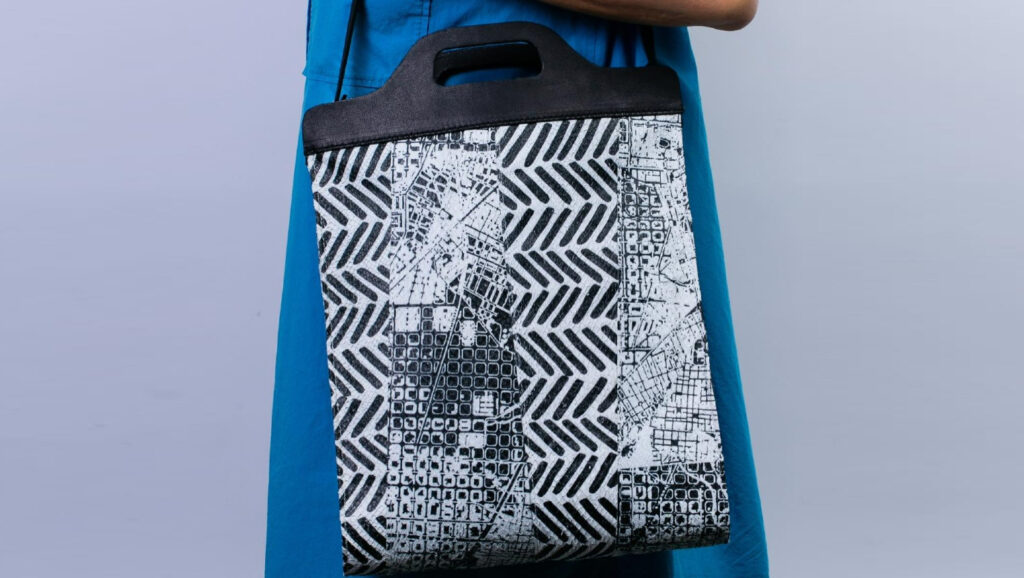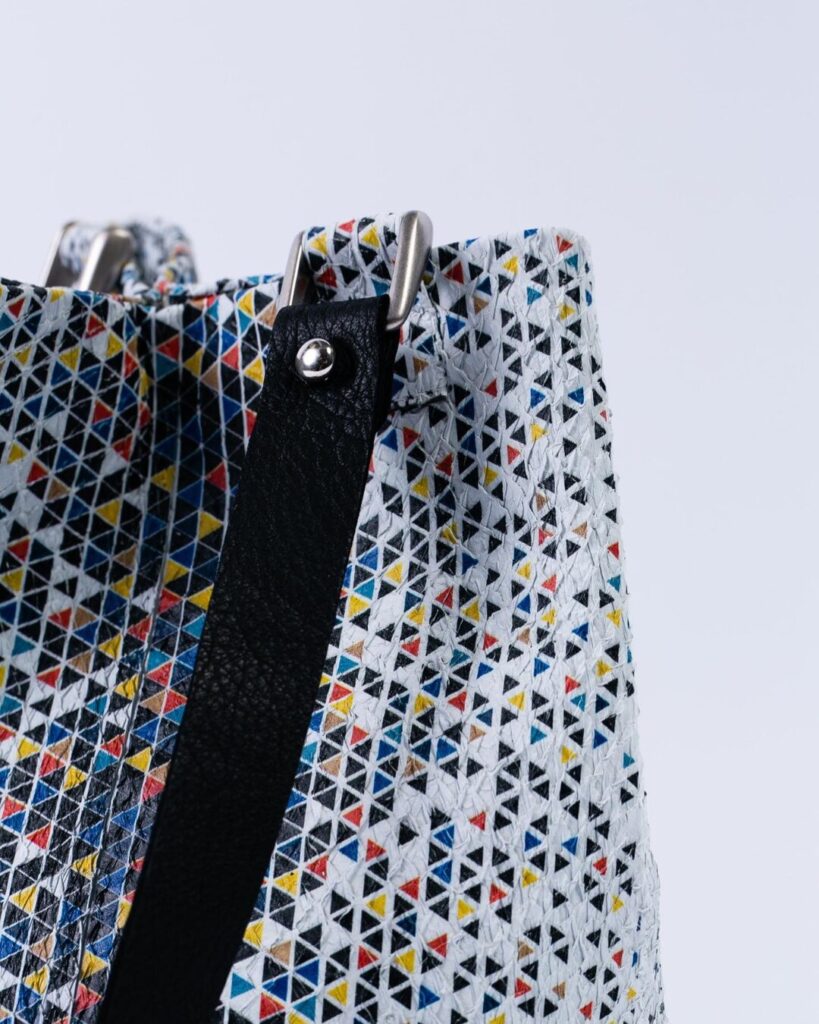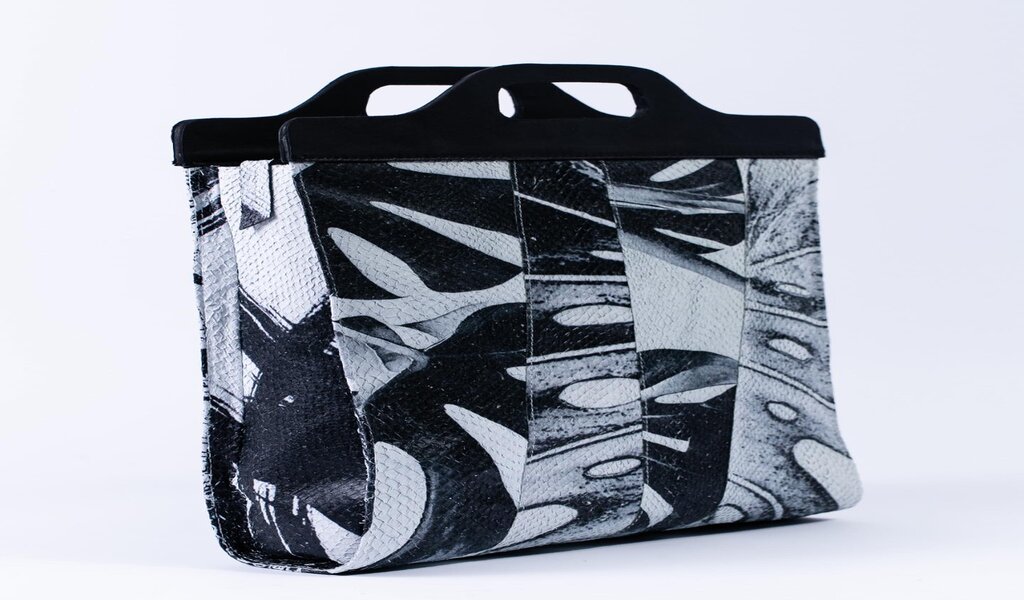With a budget of almost €80 billion, European Union research and innovation program Horizon 2020 funded many R&D projects in its time, and among them was an unusual Israeli solution for fish byproducts (waste).
Rosh HaAyin-based startup Kornit Digital, which specializes in textile printing technology, and Shenkar College, a leading Israeli design school, teamed up as part of the FISHSKin project and consortium to create a way of transforming the waste into a useful everyday product – a handbag made from discarded salmon skin.
Salmon is the world’s second most-consumed fish after tuna, and according to the United Nations Food and Agriculture Organization (FAO), we ate more than 2.6 million metric tons of it in 2022.
The huge size of the salmon, which can grow up to 1.5 meters, makes the skin ideal for larger projects such as handbags, and it was crucial that it came in one piece so it could easily be used to produce them, Ira Yudovin-Farber, chemistry group manager at Kornit Digital, tells NoCamels.
“The salmon is a big fish that actually will allow you to construct any accessory,” she says.

Yudovin-Farber believes that the success of this type of project will boost sustainability in the fashion industry, which often comes under criticism for environmentally unfriendly, easily discarded products.
“We would like to promote this recyclability of the materials in fashion, which is one of the polluting industries,” she explains.
And it is not just the fashion industry that is considered wasteful. The FAO says that as much as 80 percent of fish of all kinds is wasted throughout the process to obtain its meat.
Design Challenge
When Kornit first received salmon skin from Nordic Fish Leather in Iceland, another partner in the FISHSkin project, the company quickly realized that its proprietary inkjet printer for textiles was not going to work.
According to Yudovin-Farber, fish skin is an entirely different medium to the fabric that Kornit generally prints on. So they had to develop an entirely new process.
The first challenge to overcome was how to dye the fish skin’s natural hue while keeping a vibrant color palette. This led to the company effectively redesigning its proprietary NeoPigment inkjet printer, which it says has superior graphic and color matching capabilities.
Having figured out how to print both color and grayscale onto the fish skin, Kornit then encountered another obstacle: maintaining the integrity of the fish scales during a curing process that involves heating the skin to a temperature of around 120 degrees Celsius.

“This is a very sensitive material,” says Yudovin-Farber, recalling the trial and error process they engaged in until they found a solution.
Sign up for our free weekly newsletter
SubscribeShe explains that because normal treatment did not work for the fish skins, the temperature and time in the curing oven had to be reduced to avoid any shrinkage or deformation of the fish leather.
Overcoming these obstacles and perfecting the process took about two years, she says. During this period, the financial support from Horizon was supplemented by Kornit itself, which funded the testing and printing part of the process.
At this stage, Kornit also called on the project’s partners the University of the Arts London and the Italian Institute of Technology to verify that the cured skin was indeed durable and viable.
And it was only when the fish leather had been perfected that the decision was taken to create handbags out of it.
That choice was made by Ori Topaz, a designer at Shenkar’s CIRTex Textile Innovation Center.
“I chose handbags because we wanted to prove that this waste material could be used in a real production line,” Topaz tells NoCamels.
She says that it took a while to come up with the best process to make the bags even before the first cut was made. This optimal process, she adds, involved working closely with Yudovin-Farber to determine how the finished item would look.

The bags were produced using the French maroquinerie methodology – an art of creating leather goods in which Topaz was trained.
“[Fish skin] is very thin, very strong,” she says, and the dimensions of the salmon skin made it suitable for medium-sized handbags or wallets.
The handbags are not currently for sale, but Topaz says they are proof of concept that such items could be created by mass production.
And for Yudovin-Farber, it showed that the fashion industry can indeed find worth in waste, even if it is discarded fish guts.
“The waste material of one product can be the raw material of another,” she says.
Related posts

Rehabilitation Nation: Israeli Innovation On Road To Healing

Harnessing Our Own Bodies For Side Effect-Free Weight Loss





Facebook comments